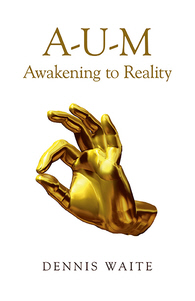(Extract from the book)
 What exactly happens when a person is enlightened or ‘gains mokSha’? A popular, although somewhat incomprehensible, belief is that the world somehow ‘disappears’; that, for the j~nAnI, there simply is no longer any duality. Quite how the j~nAnI (apparently) continues to eat, drink and converse is not adequately explained by those who hold such a view. But Gaudapada approaches it from a different and even more dramatic angle.
What exactly happens when a person is enlightened or ‘gains mokSha’? A popular, although somewhat incomprehensible, belief is that the world somehow ‘disappears’; that, for the j~nAnI, there simply is no longer any duality. Quite how the j~nAnI (apparently) continues to eat, drink and converse is not adequately explained by those who hold such a view. But Gaudapada approaches it from a different and even more dramatic angle.
Prior to my enlightenment, I make the mistake of identifying myself with the body-mind, believing myself to be a separate entity. This is the result of my Self-ignorance – not realizing that I am the unlimited Atman. Gaudapada says that this ignorance is beginningless (anAdi) (K1.16). At the dawn of Self-knowledge, I recognize that I am not the waker, dreamer or deep-sleeper but the non-dual turIya.
As to whether or not the world then disappears, Gaudapada effectively asks: how can it disappear when it didn’t exist to begin with? “If the visible world actually existed, there is no doubt that it might stop (i.e. disappear) (as soon as j~nAna was gained). (But) this (apparent) duality is merely mAyA (and) the absolute truth is non-dual.” (K1.17) Continue reading


